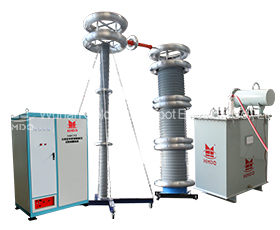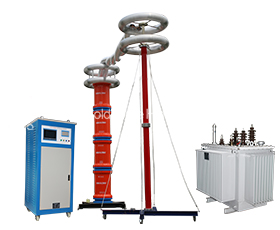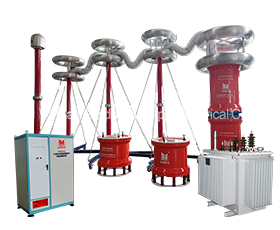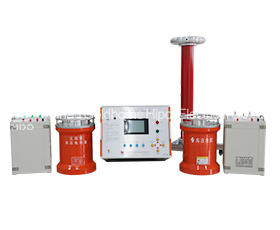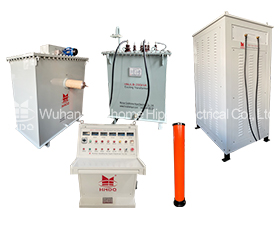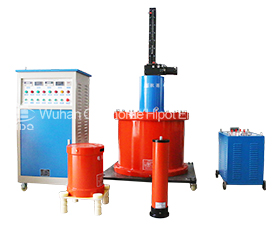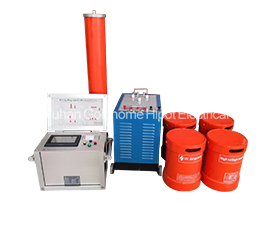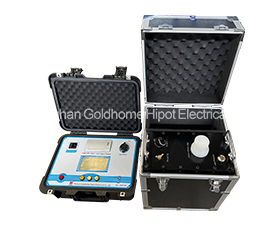The experimental steps involved in using an AC Resonant Test System
Jan. 24, 2024
AC Resonant Test Systems are used to test the insulation of high voltage equipment such as power transformers, cables, and bushings. This type of testing is crucial in ensuring the safety and reliability of these components in electrical power systems. In this article, we will discuss the experimental steps involved in using an AC Resonant Test System.
 Step 1: Preparation
Step 1: Preparation
The first step in conducting an AC Resonant Test is to prepare the test specimen. This involves ensuring that the equipment is properly grounded and that all connections are secure. The test specimen should also be inspected for any visible damage or defects that could affect the test results.
Step 2: Setting up the Test System
Once the test specimen is prepared, the next step is to set up the AC Resonant Test System. This involves connecting the test specimen to the high voltage power supply and the resonant test circuit. The test system should be configured to the appropriate test voltage and frequency based on the specifications of the equipment being tested.
Step 3: Conducting the Test
With the test system set up, the actual test can be conducted. The AC Resonant Test System applies a high voltage AC signal to the test specimen at the resonant frequency of the test circuit. This causes the test specimen to resonate, which allows for the detection of any insulation defects or weaknesses.
Step 4: Monitoring and Analysis
During the test, it is important to monitor the test specimen for any signs of arcing, corona discharge, or other abnormalities. Additionally, measurements of voltage, current, and power factor are taken to assess the insulation integrity of the test specimen. The data collected during the test is then analyzed to determine if the equipment meets the required insulation standards.
Step 5: Interpretation of Results
Once the test is completed, the results are interpreted to determine the condition of the insulation in the test specimen. If the test reveals any insulation defects or weaknesses, further investigation and corrective action may be necessary to ensure the safety and reliability of the equipment.
In conclusion, the experimental steps of an AC Resonant Test System are crucial in assessing the insulation integrity of high voltage equipment. By following these steps, electrical engineers and technicians can ensure the safety and reliability of power transformers, cables, and other high voltage components in electrical power systems.

The first step in conducting an AC Resonant Test is to prepare the test specimen. This involves ensuring that the equipment is properly grounded and that all connections are secure. The test specimen should also be inspected for any visible damage or defects that could affect the test results.
Step 2: Setting up the Test System
Once the test specimen is prepared, the next step is to set up the AC Resonant Test System. This involves connecting the test specimen to the high voltage power supply and the resonant test circuit. The test system should be configured to the appropriate test voltage and frequency based on the specifications of the equipment being tested.
Step 3: Conducting the Test
With the test system set up, the actual test can be conducted. The AC Resonant Test System applies a high voltage AC signal to the test specimen at the resonant frequency of the test circuit. This causes the test specimen to resonate, which allows for the detection of any insulation defects or weaknesses.
Step 4: Monitoring and Analysis
During the test, it is important to monitor the test specimen for any signs of arcing, corona discharge, or other abnormalities. Additionally, measurements of voltage, current, and power factor are taken to assess the insulation integrity of the test specimen. The data collected during the test is then analyzed to determine if the equipment meets the required insulation standards.
Step 5: Interpretation of Results
Once the test is completed, the results are interpreted to determine the condition of the insulation in the test specimen. If the test reveals any insulation defects or weaknesses, further investigation and corrective action may be necessary to ensure the safety and reliability of the equipment.
In conclusion, the experimental steps of an AC Resonant Test System are crucial in assessing the insulation integrity of high voltage equipment. By following these steps, electrical engineers and technicians can ensure the safety and reliability of power transformers, cables, and other high voltage components in electrical power systems.
- Previous
- Next
Hot Products
- AC Resonant Test System With Partial Discharge View More
- AC Resonant Test System View More
- Discharge Free Induced Voltage Test System View More
- AC Resonant Test Set With Partial Discharge View More
- Power Frequency Inductive Resonant Test View More
- Power Frequency Inductive Resonant Test System View More
- AC Resonant Test Set View More
- VLF Hipot Tester View More

